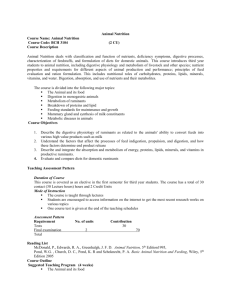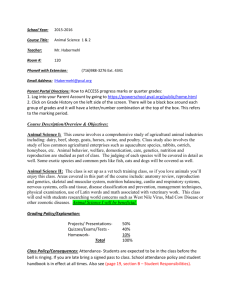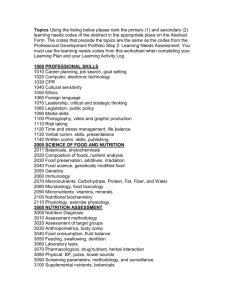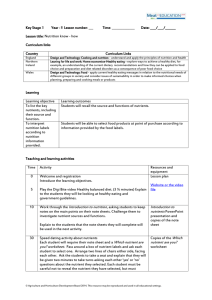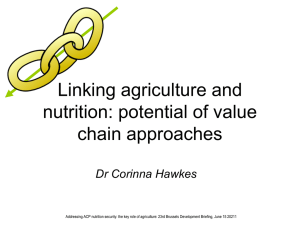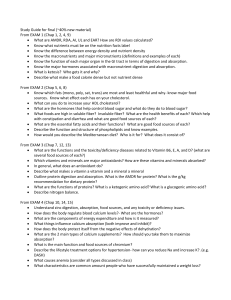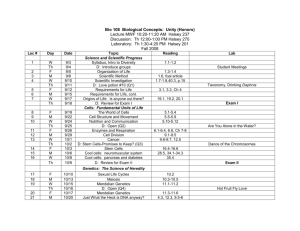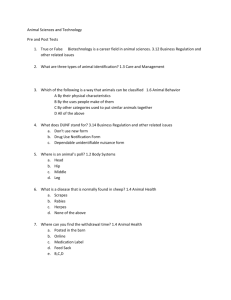ANS110: Introduction Animal Science
advertisement
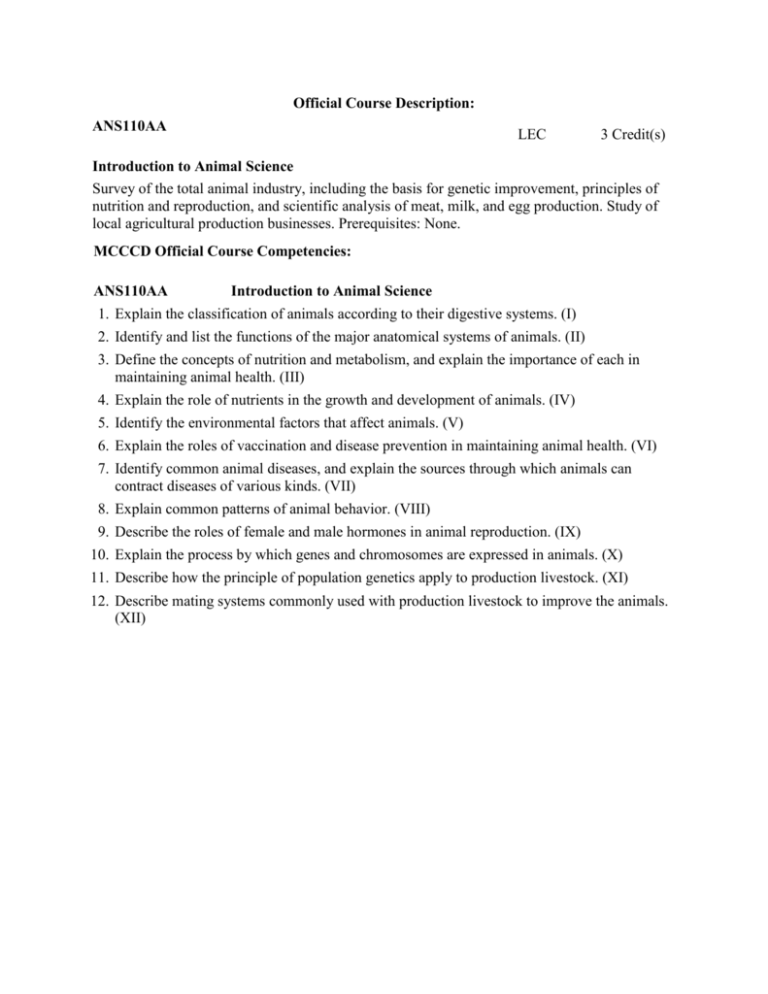
Official Course Description: ANS110AA LEC 3 Credit(s) Introduction to Animal Science Survey of the total animal industry, including the basis for genetic improvement, principles of nutrition and reproduction, and scientific analysis of meat, milk, and egg production. Study of local agricultural production businesses. Prerequisites: None. MCCCD Official Course Competencies: ANS110AA Introduction to Animal Science 1. Explain the classification of animals according to their digestive systems. (I) 2. Identify and list the functions of the major anatomical systems of animals. (II) 3. Define the concepts of nutrition and metabolism, and explain the importance of each in maintaining animal health. (III) 4. Explain the role of nutrients in the growth and development of animals. (IV) 5. Identify the environmental factors that affect animals. (V) 6. Explain the roles of vaccination and disease prevention in maintaining animal health. (VI) 7. Identify common animal diseases, and explain the sources through which animals can contract diseases of various kinds. (VII) 8. Explain common patterns of animal behavior. (VIII) 9. Describe the roles of female and male hormones in animal reproduction. (IX) 10. Explain the process by which genes and chromosomes are expressed in animals. (X) 11. Describe how the principle of population genetics apply to production livestock. (XI) 12. Describe mating systems commonly used with production livestock to improve the animals. (XII) MCCCD Official Course Outline: ANS110AA Introduction to Animal Science I. Classification of Animals A. Omnivores B. Carnivores C. Herbivores 1. Monogastric 2. Avian 3. Polygastric (ruminants) II. Anatomy and Physiology of Animals A. Digestive system B. Skeletal system C. Circulatory system D. Nervous system E. Muscular system F. Respiratory system III. Nutrition and Metabolism A. Balanced nutrition 1. Growth and development 2. Maintenance reactions 3. Reproductive rations 4. Production needs B. Nutrients C. Metabolism 1. Enzymatic digestion 2. Absorption 3. Nutrient transport 4. Nutrient storage 5. Nutrient utilization IV. Growth and Development A. Nutrition and growth B. Nutritional needs 1. Ruminants 2. Nonruminants 3. Horses 4. Poultry 5. Pets V. Animal Environmental, Conditions A. Heat, cold, stress B. Shade, ventilation C. Space, waste D. Safety 1. Accidents 2. Predators VI. Animal Health A. Value of maintaining health B. Immunity and vaccination C. Disease prevention VII. Animal Diseases A. Types and classifications B. Disease agents 1. Viruses and bacteria 2. Fungi 3. Protozoa 4. Parasites (internal and external) VIII. Animal Behavior A. Learning and training B. Communication C. Group behavior and order D. Grazing and feeding E. Mother/infant F. Sexual behavior IX. Reproductive Anatomy and Hormones A. Reproductive physiology 1. Female hormones 2. Male hormones B. Changes during pregnancy X. Genetics A. Cell division (mitosis, meiosis) B. DNA,RNA, and protein synthesis C. Genes and chromosomes D. Expression of genes (dominance) E. Environmental influences on gene expression XI. Population Genetics A. Gene frequency B. Species diversity C. Endangered species XII. Heritability and Mating Systems A. Random mating B. Inbreeding and outbreeding C. Crossbreeding (hybrid vigor) D. Animal improvement E. Biotechnology

